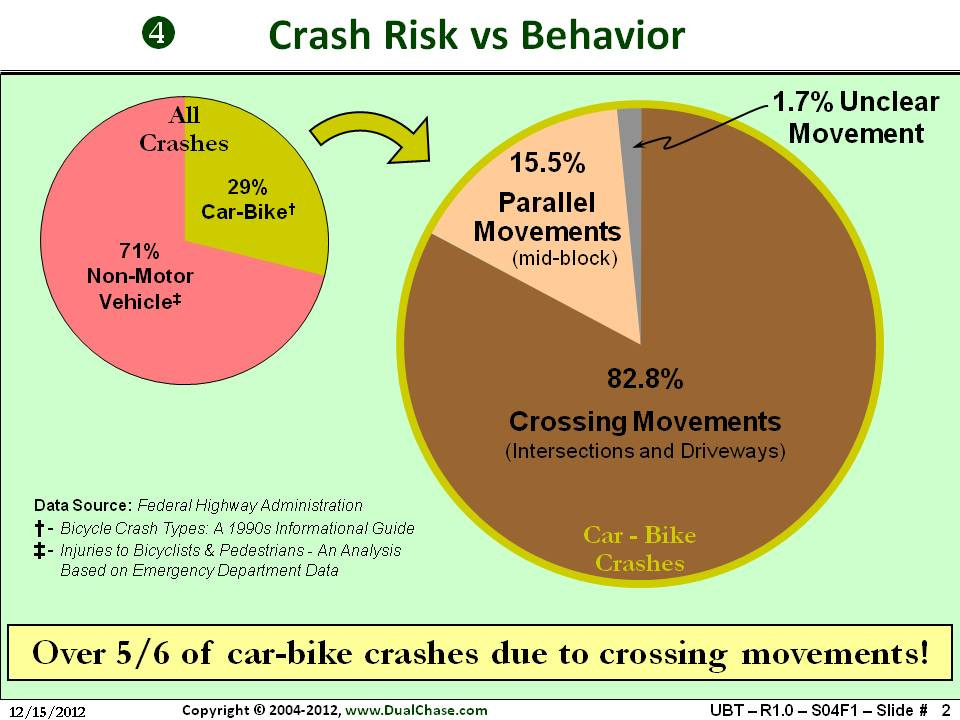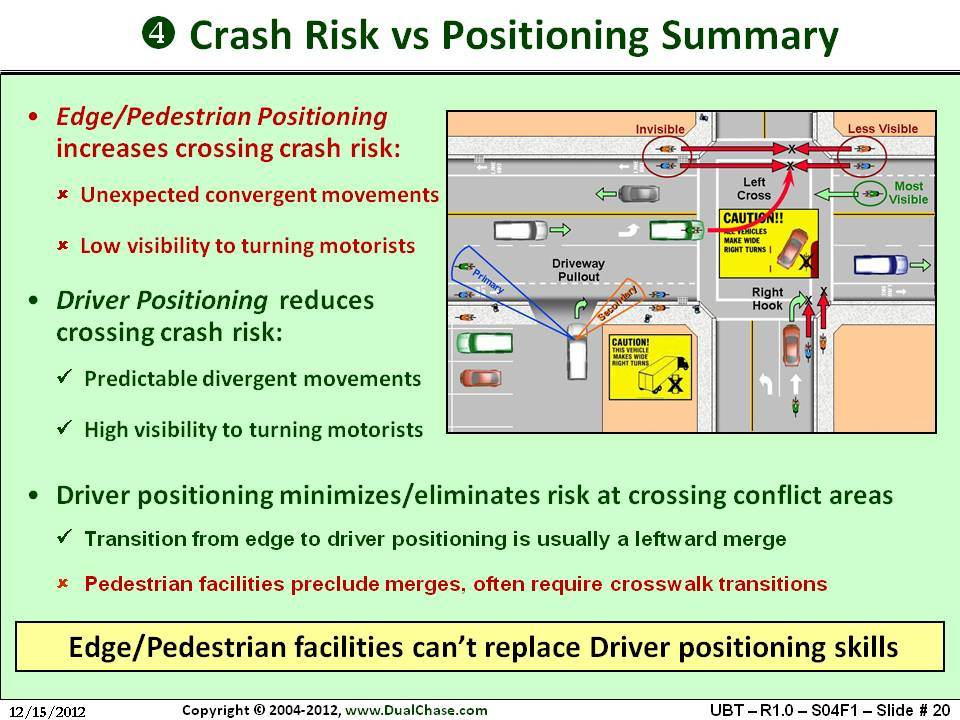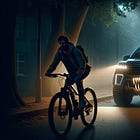Another Day, Another Preventable Bicyclist Fatality, Another Despicable Cluster B(ike) Activist Take
Legitimate cyclists don't say "just go around" hazards in their path.
“When it comes to cycling, perception rarely coincides with reality.”
-Avery Burdet, Canadian Cyclist and Bikeway Critic
Note for email and Substack App users: This post is image and footnote heavy making it cumbersome to view in an email client. It’s best to read using a web browser.
One of the promises of so-called “protected” bicycle lanes that are being installed all over cities around the world is the assertion that bicyclists “of all ages and abilities” can “feel safe” (as opposed to objectively being safe) while cycling. Even the cliche “build it and they will come”1 is sometimes repeated by supporters of these facilities with the utopian idea that it’s simply this lack of “safe” infrastructure that keeps people from choosing to ditch motor vehicles and cycle. If “protected” bicycle lane proponents achieve their magical utopia, a city will be covered by a network of these facilities. A conversion to mass cycling has many promises such as reducing both local tailpipe pollution as well as “saving the planet” from “Climate Crisis,” addressing the “Traffic Violence Epidemic” and as part of a Public Health demanded solution to the obesity crisis.
But these bikeways are often built on the edge of roadways, between the general-use traffic lanes, and the curb. Sometimes this “protection” is provided by a row of parked cars, and other times it’s a physical barrier such as “flexible” posts, curbs or parking lot wheel stops which cause issues to the actual intended user as is being seen in Encinitas2.

Cycling in designated bicycle lanes, “protected” or not mandates bicyclists operate over toward the “edge” side of the Cycling Behavior Spectrum and “protection” pushes that behavior further into the pedestrian behavior.
These two are in contrast to driver behavior, a much misunderstood concept in the non-cycling world and blatantly misrepresented by Platitude-driven cycling and Cluster B(ike) activists.
Bicyclists, with no steel and glass cage and safety devices other than sometimes lights and helmets are understandably concerned about collisions with motor vehicles. A majority of these collisions occur from turning and crossing movements at driveways and intersections.
Edge and pedestrian behavior increases the risks of these crashes.
Another issue with bikeways installed at the edge is that the edge of most roadways are used for other purposes such as parking, the loading and unloading of goods and for water or snow drainage via gutters. This spells problems, often fatal for bicyclists trying to avoid them.
Avery Burdett of the opening quote wrote years ago specifically of the issues with Toronto and Ontario bikeways.
Bike lanes can be expensive, inefficient, and physically hazardous. The additional costs of bike lanes on new roadways is approximately $100,000 per kilometre. Removal of regular traffic lanes on existing roads to make way for bike lanes reduces vehicle capacity and parking, and moves congestion to parallel streets. Across Ontario, bike lanes are characterized by broken pavement, potholes, sewer grates, hydro poles, gravel, accumulated garbage, and other impediments to safe travel.
Burdett’s point applies virtually anywhere anointed bikeway activists get their way but these issues came into light in a recent tragedy.
Bloor Street is a major east-west road that crosses through much of the Canadian city of Toronto including its downtown area. The road in this area consists of two general-use traffic lanes (one in each direction) and bikeways. Along most of the corridor, the bikeways are “protected” on some blocks by parked cars and others by concrete barriers and planters.

This exact block, sadly, was the location of the recent bicyclist fatality.
Per the Toronto Sun:
“The cyclist was travelling westbound on Bloor St. in the bike lane, that bicycle left the bike lane, and at the same time a dump truck also travelling westbound on Bloor St. struck the bicyclist,” acting Duty Insp. Jason Bartlett told reporters at the scene.
Police later said the cyclist exited the bike lane, merging into the westbound vehicle lane and was struck by the commercial vehicle.
The cyclist, a 24-year-old woman, died at the scene.
The 39-year-old man driving the truck remained at the scene and was cooperating with police.
A CBC article on the fatality reported the bicyclist, a 24 year old woman was using one of the city’s bike share bicycles3 with some e-bikes4 in their fleet. CBC further elaborated the probable reason the victim left the “protected” bicycle lane.
A construction bin was sitting in a bike lane in the area at the time, he said, which will be part of the police investigation.
It didn’t take long for the news of this woman’s fatality and fall in the hands of
, a Cluster B(ike) activist with horrendous history of taking these tragedies and distorting them to suit his pathological agenda.Boenau’s bullshit has been covered a few times here.
Below is his “take,” where he does his usual: being a metaphorical vulture5 along with presenting a complete distortion of the safety advice legitimate that Principled bicyclists advise by twisting their words and creating a strawman.
The advice is not to “just go around” when it comes to trying to pass or avoid something in a bicyclist’s path.
That’s idiotic and hazardous.
The real advice is to slow down if needed, look, signal (if safe to do so), yield, and then “go around.”
Looking and signaling on a bicycle takes a bit of skill for some bicyclists as it may be difficult for a new cyclist to keep his or her line and not swerve.
One should not move or merge laterally into the trajectory of someone else until the movement can be done safely.
This is basic skill taught both in motor vehicle driving and bicycling education and has been a staple in traffic law since the Eno days.
A sad truth is the edge of roadways, where bicyclists often ride, often contain obstacles.
Principled bicyclists have long pointed to this fact as an issue for edge riding and bicycle infrastructure located on the edge of roads while anointed activists insist this is a reason such infrastructure needs to be built while completely ignoring reality. A Dan Sullivan quote from a previous article comes to mind that’s also applicable to this Toronto street.
(And no vultures, this does not excuse the owners of the dumpster’s alleged negligence in obtaining permission from the city.)
The article Boenau linked to provides additional context on the presence of the dumpster: that the owners likely did not obtain the proper permission from the city before placing the dumpster in city right of way.
The article also, from the voice of the journalists, insist the bicyclist was forced out of the bicycle lane. The use of the verb force implies the journalists too really don’t understand the issue although it’s possible when bicyclists get doored and are thrown in to the general-use traffic lane as happens in some dooring fatalities.
The article also gives airtime to another metaphorical vulture, a spokesperson for the activist group Friends and Families for Safe Streets.
It’s an “extremely likely explanation” that the cyclist swerved into oncoming traffic in order to avoid that dumpster, said Jess Spieker, spokesperson for Friends and Families for Safe Streets. The area near Bloor Street and Avenue Road is known to be particularly dangerous for cyclists. Three have been killed on Avenue Road in the past nine years.
“It speaks to ongoing failures to take the crisis of road violence seriously,” Spieker said. “People park in (bike lanes) confident there will be no consequences whatsoever.”
While Cluster B(ike) Activists will sure come out with the “victim blaming” slur, a side effect of their savior complex (see “The Bicycling Advocacy Drama Triangle” or
‘s work), is a complete disconnect on the fact the bicyclist killed likely failed to properly yield to motor traffic when she left the bicycle lane.Also nobody knows the details on whether the victim had any cycling education experience with an emphasis on the negative side effects of bikeway use or whether she’s one of the millions of bicyclists who operate by default as “road sneaks” as edge cyclists or pedestrians on wheels.
Principled-Driven bicycling advocates have not been sound the alarm on these issues for decades.
This claim is in part based on the revisionist history that the Netherlands achieved their high cycling rate of cycling by building lots of bikeways thus ending the country’s “car culture.”
This is worth mentioning for a few reasons; anybody of any skill level can and does use bike share services, and bike share bikes are sometimes poorly maintained meaning they might brake issues.
E-bikes which pose their own unique issues that can cause problems for bicyclists, especially for edge and pedestrian behavior riding in bike infrastructure.
https://cyclingsavvy.org/2018/01/everyones-a-racer-now/
https://cyclingsavvy.org/2021/04/e-bike-benefits-and-challenges-its-a-different-machine/
https://cyclingsavvy.org/2023/02/ebikes-motorist-expectation-control-release/
Vulture in this context stems from Larry Correia in the first chapter of his book In Defense of the Second Amendment to describe the ways anti-gun activist dishonestly use gun deaths (often horrific mass shootings) dishonestly for their political agendas.
Every time there is a mass murder event, the vultures launch. It’s fascinating in a sickening way. A bunch of people get killed, and within minutes the same crew of anti-gun zealots shows up all over the news and social media, pushing the same tired proposals that we’ve either tried before or logic tells us simply can’t work. With zero hesitation they strike while the iron is hot, trying to push through legislation before there can be any coherent thought about the repercussions. We’ve seen this over and over and over again. We saw them succeed in England. We saw them succeed in Australia and New Zealand. We’ve seen it succeed here before.
Yet when anyone from my side responds to these ghouls, then we’re shouted at that we’re insensitive and how dare we speak about politics in this moment of tragedy. We should just shut our stupid mouths out of respect for the dead… while they are free to promote policies that will simply lead to a higher body count next time. If gun rights organizations say something, they are bloodthirsty monsters, and if they don’t say anything, then their silence is damning guilt.
It is hypocritical in the extreme, and when I speak out against this, I’m called every name in the book, they say I want dead children in schools and malls, or they wish death upon my family. If I focus on logic or rationality, I’m a cold-hearted monster. If I become angry because they are promoting policies that are flawed and will accomplish the exact opposite of their stated goals, then I am a horrible person for being angry. Perhaps I shouldn’t be allowed to own guns at all.
The vultures never hesitate to lie or emotionally manipulate decent, well-meaning people who just want to keep their communities safe. They prey on the public’s good intentions and lack of knowledge. If you question them, they’ll browbeat you into silence. They don’t want debate. They want compliance.









